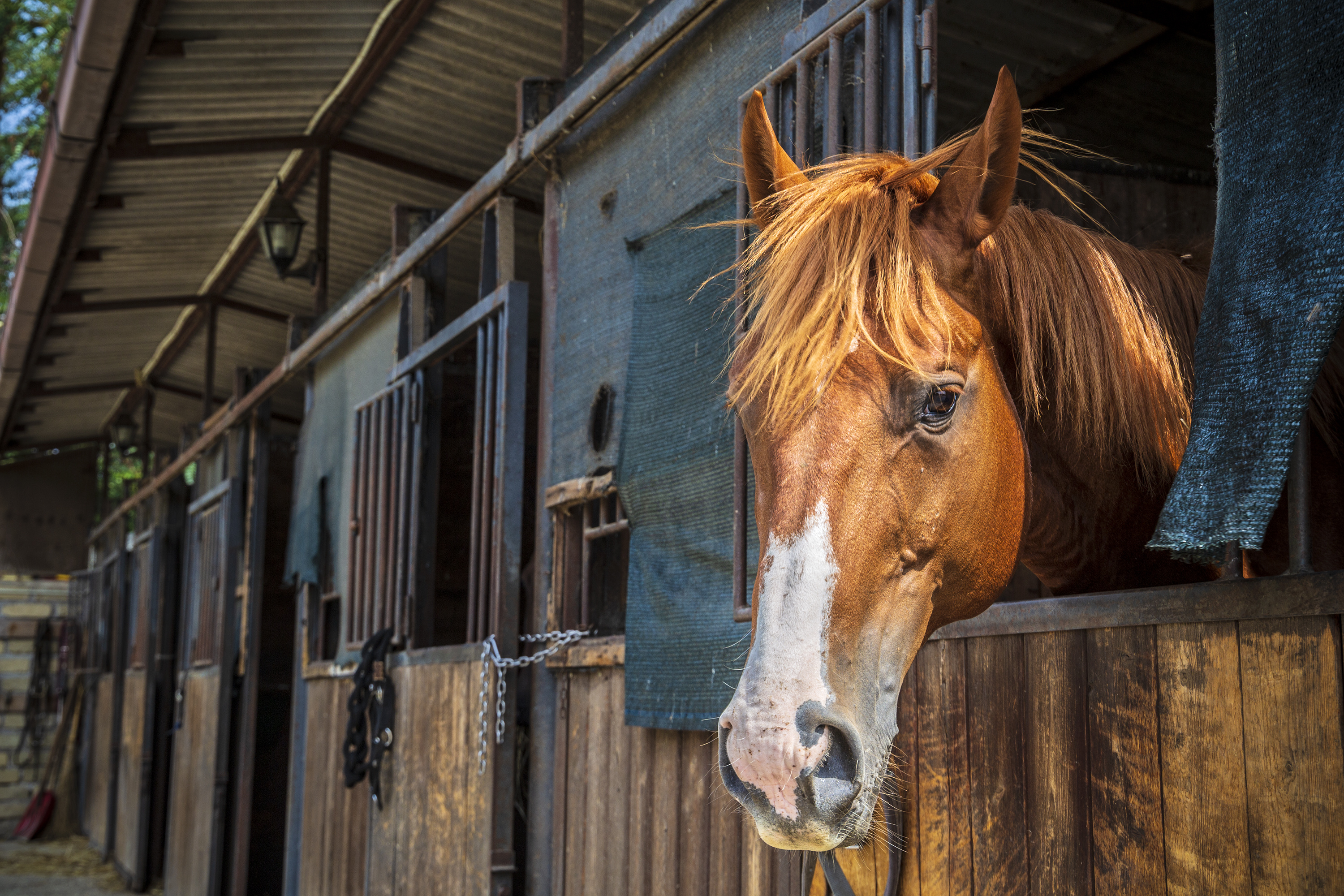Stall rest. What can prompt your veterinarian to prescribe it? Soft-tissue injuries, bone fractures, severe wounds, post-surgery recuperation (as for colic), and more. Whatever the cause, here’s how to manage your horse on stall rest in a way that keeps him happy and healing.
[READ: EQUINE MASSAGE THERAPY]

Location, diet. Where you confine your horse will affect how he accepts it. A stall where he can observe the goings-on around him, as in a working barn, can work well. Having other horses stalled nearby at least some of the time is especially helpful. If other equines aren’t available, consider an other-species pal (such as a goat or sheep) to keep him company.
If your vet OKs it and weather permits, an outside pen downsized to stall dimensions can provide an enjoyable change of scenery. You can also move a portable pen to provide your horse with a little fresh grazing plus proximity to pasture-mates.
A stallbound horse needs his diet adjusted to minimize the energy buildup that confinement can cause. Ask your vet about cutting back on carbohydrates and emphasizing lower-calorie grass hay in a slow-feed net. This keeps your horse munching longer without energy overload.
Diversions. Hand walking or grazing, assuming your vet OKs it, helps your horse deal with stall rest from both mental and physical standpoints. (Some stallbound horses may require a sedative in order to be walked safely; more on that in a moment.)
If your horse mustn’t leave his stall, extended grooming sessions are an alternative that offers both companionship and relaxation.
Stall toys can help your horse pass the time, as well; those that dispense small amounts of pellets or hay as horses play with them are particularly entertaining.
Even an unbreakable mirror, mounted so your horse can see his own reflection, can help to break up the boredom.
Sedatives. Though many horses adapt reasonably well to stall confinement, others quickly develop cabin fever and are unable to relax, potentially posing a danger to themselves and others.
If your horse endlessly paws, circles, or kicks at the walls, consult your veterinarian about the possibility of prescribing a mild sedative—such as acepromazine—to help him relax and settle in.
A small dose of sedative can also help calm him for hand walking, plus steady him the first few times he’s turned out after his stall rest is over.
In some circumstances, your vet may also consider the use of a longer-acting tranquilizer, such as reserpine.






